EUROPAM workshop
Information :
Il est toujours possible de se connecter aux colloques de 10 et 11 dec. Pour cela, veuillez demander un lien de connexion à l’adresse : glotin@univ-tln.fr
ou présentez-vous en physique à l’amphithéâtre M de l’Université de Toulon, Campus de La Garde
Programmes des deux journées :
Mercredi 10 Décembre :
https://seminaire-du-collectif-bruit-sous-marin.my.canva.site/programme-bsm-2025
Jeudi 11 Décembre EUROPAM prog Européen :
https://www.univ-tln.fr/EUROPAM-workshop.html
Ces journées sont co-organisées par
le MINISTÈRE DE LA TRANSITION ÉCOLOGIQUE, DE LA BIODIVERSITÉ DE LA MER
ainsi que par le CIAN-LIS
PROGRAM EVENT
Organized by CIAN LIS
Date : December 11, 2025
Place : Université de Toulon, bâtiment M
Time: 8h30-17h30
8:30 – Welcome coffee
9:00 – Introduction : aims of EUROPAM, recent missions in Medsea and Arctic and coming models (H. Glotin, PI, CIAN)
SESSION 1: Arctic Observations and Models
9:30 – Long term acoustic monitoring of 3 superpredators in Arctic versus anthropophony (Justine Girardet, CIAN LIS and CIBRA)
9:55 – Decoding echolocation: Good practices for studying the sonar of marine animals (Nicolas Deloustal, CIAN LIS)
10:15 – Sound propagation modelling validation with sound measurements from a subsea glider (Virginie Ramasco, Akvaplan-Niva)
10:40 – Examples illustrating the Arctic Acoustic Scene’s complexity, stakes, and outlooks (H. Glotin, CIAN)
11:10 – Discussions
11:35 – Break – Lunch 11:50-12-40 (Beal cafeteria)
SESSION 2: Material and Demo : Intelligent Acoustics (Sebastian Marzetti)
13:10 – 14:20 – Building compact arrays & embedded AI : Demo Coffee (Bât X)
SESSION 3: Mediterranean and mid Atlantic observations and models
14:35 – What can tell an array on megafauna vs anthropic pressure ? The stereo Bombyx1 (Justine Girardet, CIAN LIS and CIBRA)
14:55 – Propagation model for range estimation, perspective on megafauna localisation with in situ experiments in WW6 (Lilou Dantin, CIAN LIS & PNPC)
15:20 – SEGAMAS and transformers for UBF and HF fauna survey (Sébastien Paris, CIAN)
15:50 – Megafauna survey and ship collision risk mitigation: perspectives with the real-time BOMBYX sonobuoy in the Azores (Cláudia Inês Botelho de Oliveira, IMAR)
SESSION 4: General discussion
16:15 – Megafauna-trafic collision risk and deployment of Bombyx3 (all partners, H. Glotin and PNPC)
16:45 – Next steps, collaborations and discussions
17:30 – Closure
About EUROPAM project
EUROPAM aims to increase knowledge of anthropogenic impacts on marine megafauna through large-scale passive acoustic monitoring that allows for comparison of sites and sources of disturbance, as well as the population segments of sperm whales, for example. The cornerstones for achieving the objectives will be :
A comparative continuous passive acoustic monitoring in the Mediterranean Sea, in the Azores Atlantic Ocean, and offshore Norway, for an equivalent of 23 000 km2;
A comparison of marine soundscapes from the European Arctic to the Mediterranean Sea, and from relatively quiet marine protected areas to areas under strong human activity pressure;
An innovative Artificial Intelligence developed to describe and model marine soundscapes and their natural patterns (daily and seasonal) that allows us to build and feed a marine soundscape repository in the cloud;
A strict protocol that will allow the calibration of measurements and provide comparable data across a large range of temporal and spatial scales;
An additional key management output of EUROPAM is mitigation of whale-ship collision risks.
EUROPAM will identify conservation areas and seasonality of species diversity, compare noisy with quiet areas, and measure noise level changes in relation to wind farm construction, new industrial offshore development and the exponentially increasing marine traffic. The project will monitor the Arctic, Atlantic, and Mediterranean Sea regions, which are all expected to be highly impacted by climate change. It addresses the topics highlighted in Theme 1 of this call, by establishing a comprehensive understanding of effective and resilient ecological networks, while contributing to enhanced species-based protection. Furthermore, the project will monitor exponentially increased marine traffic and observe species displacement, while comparing acoustics of across latitude gradients (between Mediterranean Sea, Azores and Norway) using state-of-the-art methodology. Europam has wide ranging applications and benefits. It is a cross-cutting subject with economic, social and political impacts. A preliminary stakeholder analysis has been conducted to identify key actors that will be actively involved in the project through outreach activities, like Knowledge Transfer Workshops.
- Computer science and systems laboratory (LIS), University of Toulon, Toulon, France
Sea Research Department, The National Park of Port-Cros, Parc National de Port Cros, Perols, France
Department of Earth and Environment Science, University of Pavia, Pavia, Italy
Department of Environmental impact, Akvaplan-niva, Tromsø, Norway
Department of Oceanography and Fisheries, Institute of Marine Research (IMAR), Horta, Portugal
EUROPAM Publications
List and abstracts of the articles that will be presented at the One Ocean Science Congress, an UNOC3 Special Event – 6th June 2025 – Nice
Learn more about the event One Ocean Science Progress : https://one-ocean-science-2025.org/
Booklet of the abstracts available here : https://sabiod.lis-lab.fr/pub/EUROPAM_00S_UNOC_2025_AImarineSurvey_Abstracts.pdf
Hervé Glotin, Stéphane Jespers, Valentin Gies, Justine Girardet, Gaetan Patenotre, Pascale Giraudet, Véronique Sarano, Sébastian Marzetti, Valentin Barchasz, Lionel Camus, Pierre Priou, Malik Chami, Julie Guiderdoni, Jean-Louis Etienne, Sébastien Paris,
EUROPAM bioacoustics explorations in Arctic fjord – Mid term report
Link to the article here : https://sabiod.lis-lab.fr/pub/EUROPAM_ARCTIC_Observations_Model_midterm_202501_eng.pdf
Hervé Glotin, Stéphane Chavin, Justine Girardet, Pascale Giraudet, Paul Best,Maxence Ferrari, Véronique Sarano, François Sarano, Pierre Mahé, Valentin Barchasz, Valentin Gies, Nicolas Deloustal, Fabien de Varenne, Julie Patris, Jean-Marc Prévot, Olivier Philippe, Franck Hieramente, Vincent Bertin, Paschal Coyle, Sébastien Paris (2024),
‘Bilan d’une décennie d’observations des grands cétacés en milieu anthropisé Nord Pelagos: BOMBYX, KM3NeT, et antennes mobiles Sphyrna et WhaleWay’, Prog. recherche Pelagos 2021-2024, 151p, Ed. CNRS, French Ministry of Transition Ecology,
Link to the article here : https://sabiod.lis-lab.fr/pub/PELAGOS/PELAGOS_CIAN_UTLN_LONGITUDE181_202310_livrablecompletvf_c.pdf
Circadian rhythms of cetaceans from Arctic and Mediterranean seas with controled anthropophony.
Justine Girardet, Véronique Sarano, Agnese Marchini, Stéphane Chavin, Julie Guiderdoni, et al. DCLDE, Jun 2024, Rotterdam, France. 2022. hal-04945810
https://cian.lis-lab.fr/wp-content/uploads/2025/02/EUROPAM_Poster.pdf
EUROPAM, MITI, ADSIL, CIAN Workshop & Project meeting
Hold on the 29th of January 2024 – CIAN – University Toulon – France (see the meeting record at the bottom of the page)
link to download the report here : https://cian.lis-lab.fr/wp-content/uploads/2024/02/EUROPAM_ADAPREDAT_20240129.pdf

